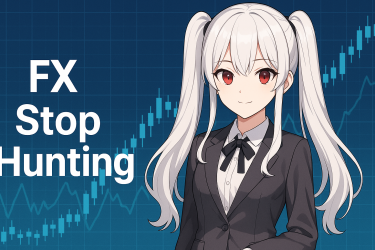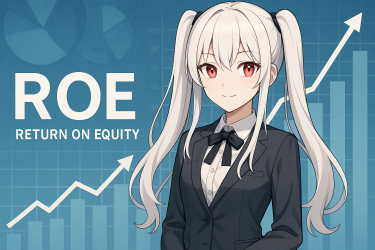關於自動交易EA與高頻交易的風險
近年,在外匯及股票市場的交易前線,「自動交易EA」的存在日益增加。它作為一種工具,使交易者能自動追蹤市場動向,並根據指定條件執行交易。特別是,結合高頻交易策略的EA大量出現,一天內進行數十至數百次,甚至更多的交易已不罕見。
然而,這種「高頻交易」乍看之下似乎是快速累積利潤的有吸引力手法,但實際上伴隨著許多風險。而且,對這些風險必須有充分的認識與因應。因為若在缺乏適當知識與策略的情況下進行高頻交易,將導致資金急速減少與不必要的壓力,最終使整體投資策略破綻的風險提升。
本文將深入探討自動交易EA中高頻交易的危險性及其背後因素。特別聚焦於過度以過去資料最佳化的模型風險,以及加碼馬丁策略的交易注意事項,為投資者提供安全交易的指引。
高頻交易的危險性
高頻交易,特別是使用自動交易EA的,對許多交易者來說可能看起來很有吸引力。能在短時間內執行大量交易,累積細微的利潤。然而,這種交易風格隱藏了許多風險。以下將介紹高頻交易的主要危險性。
- Prone to being dragged by market noise High-frequency trading often targets short-term price fluctuations, making it susceptible to temporary market noise and uncertainty. This increases the risk of losses from unpredictable movements.
- The cost of transaction fees and spreads increases. If the frequency of trades increases, the costs of transaction fees and spreads also increase. In high-frequency trading that pursues small profits, these costs can often become a significant burden.
- Risk of Rapid Capital Depletion High-frequency trading also carries the risk of consecutive losses. In particular, when the market changes abruptly, repeatedly hitting stop losses can lead to rapid depletion of capital.
- System failures and connection problems tend to become fatal When using an automated trading EA for high-frequency trading, system downtime or temporary connection interruptions can cause significant losses. In high-frequency trading where rapid real-time transactions are required, such technical issues can become a very serious risk.
Nanpin Māchin-kei EA 的注意點
在自動交易的世界中受到一定關注的「Nanpin Māchin-kei EA」。此策略結合了將倉位加重後再追加的加倉策略(ナンピン)與逐步增加交易手數的馬丁格爾法。許多交易者利用此 EA 追求高回報,但隨之而來的風險也非常高。以下,我們將詳細檢視此策略的主要注意事項。
- Basics and Risks of Averaging Down and Martingale
- Averaging Down is a strategy that adds and weights positions each time the price moves in the opposite direction. On the other hand, the Martingale method increases the lot size of the next trade when a loss occurs.
- These strategies may generate temporary profits, but they are known to increase the risk of large losses in subsequent trades.
- The Dangers of Combining High-Frequency Trading with Averaging Down and Martingale
- Using Averaging Down Martingale-type EA in high-frequency trading increases the likelihood of large losses occurring in a chain over a short period.
- There is a risk of incurring losses greater than expected due to temporary market fluctuations or noise.
- Risk of exposing more capital than necessary
- Averaging Down Martingale EA has an increased risk of losing a large amount of capital in a short period if unexpected market movements occur.
- From the perspective of capital management, which is a fundamental aspect of investing, it is necessary to exercise sufficient caution when using this strategy.
過度優化是什麼
在使用過去的數據構建交易策略時,若將模型調整至過度貼合該數據,稱為「過度優化」。特別是在自動交易EA的設計與回測時,已知此問題容易發生。以下說明過度優化的概況以及隨之而來的風險。
- Definition of Over-Optimization
- It refers to a model that is extremely fitted to past data, and in the actual market it often fails to achieve the expected performance.
- This carries the risk of creating strategies that only apply to specific times or circumstances.
- Issues in the real market
- Over-optimized models often show excellent results on past data, but because they do not take into account future uncertainty and volatility, they are more likely to cause significant losses in actual trading.
- Your ability to respond to new market movements and unknown events will be diminished.
- Measures to avoid over-optimization
- By varying the data period and conducting multiple backtests, we evaluate the model’s generalizability.
- It is important to avoid over-adjusting parameters and to focus on building a simple model.
高頻交易與過度最佳化的相關性
高頻交易的賣點之一是透過捕捉短期價格波動來獲取利潤。然而,在此交易風格中,基於過去短期資料的過度最佳化風險被指出會提升。以下將詳細探討高頻交易與過度最佳化的相關性。
- Strategy construction based on short-term data
- High-frequency trading focuses on short-term price movements, so models specialized for those movements are often created.
- Models based on such short-term data increase the risk of overfitting to the period-specific movements.
- Generation of an EA that only reacts to specific past patterns
- An over‑optimized EA only performs well in specific past market conditions or patterns, but the likelihood of achieving expected results in other situations increases.
- In a high‑frequency trading environment, market movements are rapid, and such specialized EAs could lead to catastrophic results.
- Unable to keep up with real-time market fluctuations
- Over-optimized models have reduced ability to respond to new market fluctuations and unexpected events.
- In high-frequency trading, it is necessary to respond quickly to the market’s real-time movements, but over-optimization can become a factor that reduces that capability.
微調整與過度最佳化
「微調整」指的是為了使既有模型或策略符合特定資料集或市場條件而進行的微調。然而此過程與過度最佳化的風險密切相關。以下提供深入探討微調與過度最佳化關係的內容。
- The allure and risks of fine-tuning
- Fine-tuning can create a model that performs best against specific market conditions and trends.
- However, excessive adjustments carry the risk of becoming unable to respond to future market movements and different circumstances.
- Steps toward Over-Optimization
- During the fine-tuning process, over-reliance on a specific dataset can lead to a model that cannot adapt to other data or future trends.
- This is a typical case of over-optimization.
- Balancing methods and points to note
- Adjustments are necessary to maximize the model’s effectiveness, but at that time it is important to conduct backtests while considering various datasets and periods.
- During the fine-tuning process, changes to parameters must be made with an understanding of their impact and within an appropriate range.
最後
透過本文,深入探討了與自動交易EA相關的各種主題,特別是高頻交易的危險性、加碼馬丁系統EA的注意事項、過度最佳化、微調的問題點。以下再次確認要點。
- Risks of high-frequency trading: Behind fast trading lies the risk of over-optimization based on short-term historical data. It is necessary to react quickly to actual market fluctuations, and an EA that cannot keep up may cause significant losses.
- Averaging Down Martingale type EA: This method is an attractive approach to pursue profit, but it carries the risk of large drawdowns and depletion of capital.
- Over-optimization Problem: Building a model that overly depends on specific past data may become unable to respond to actual market movements.
- Pitfalls of Fine-Tuning: Adjusting existing models to fit specific market conditions can lead to over-optimization if not done properly.
最終,我們再次確認,自動交易的策略與模型建構必須謹慎的分析與評估。不能僅依賴過去的數據或短期波動,必須考慮市場的整體走勢與風險,這是成功的關鍵。










